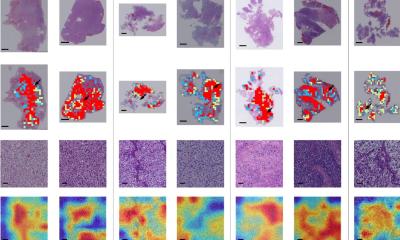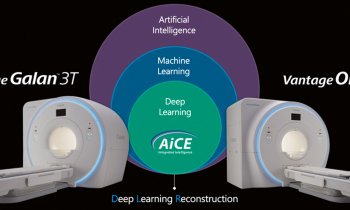Image source: Luo Y, Jiao M, Fotedar N et al., Journal of Medical internet Research 2025 (CC BY 4.0)
News • LLM-based semiology interpretation
Epilepsy: ChatGPT pinpoints seizure locations in the brain
AI and epileptologists should work together for the best results, find researchers at Stevens Institute of Technology
Epilepsy, one of the most common neurological disorders characterized by recurrent seizures, affects over 70 million people worldwide. In the United States, about 3.4 million people live with this challenging condition. Around one third of the epilepsy cases cannot be controlled by medications. For those patients, surgical resection of the epileptogenic zone (EZ), an area whose removal can lead to seizure freedom — a period of time when a person with epilepsy experiences no seizures — can be an effective option to reduce or eliminate seizures.
Large language models such as ChatGPT, could be valuable tools for analyzing complex textual information, helping interpret seizure semiology descriptions and assist in accurately localizing the epileptogenic zones
Feng Liu
However, the current success rate for resective surgery — in which the surgeon removes some of the brain tissues where seizures originate — is around 50% to 60%. One of the reasons is that the EZs were not accurately identified. To identify the EZs, patients undergo a series of tests, including MRI, electroencephalography or EEG and intracranial EEG. Epileptologists use these data and images to describe the so-called seizure semiology — the symptoms and behaviors during seizures. This information is used to predict the location of the EZs.
However, the language epileptologists use to describe seizure semiology can differ from one epilepsy center to another. “Different epilepsy centers may use different terms describing the same seizure semiology,” says Feng Liu, Assistant Professor at the Department of Systems and Enterprises, Schaefer School of Engineering and Science at Stevens Institute of Technology. “For example, terms ‘asymmetric posturing’ and ‘asymmetric tonic activity’ can be used to describe the same thing,” he shares one example, referring to a posture where one arm or one leg is extended while the other is flexed. “There are a lot of terms that can refer to the same thing, but different centers may use different terminology to describe it.”

Image source: Luo Y, Jiao M, Fotedar N et al., Journal of Medical internet Research 2025 (CC BY 4.0)
That creates a certain inconsistency, presenting challenges to surgeons. Due to the descriptive nature of seizure semiology, Large Language Models or LLMs such as ChatGPT, which were trained on a vast cohort of public records, may be a valuable tool to help identify the EZs.
Liu and his team of collaborators, including Dr. Neel Fotedar from Case Western Reserve University, Dr. Hai Sun from Rutgers University, Dr. Vikram Rao from UCSF, Dr. Felix Rosenow from Goethe University, to name a few, evaluated the clinical value of using ChatGPT to interpret seizure semiology in order to predict the EZ. “Large language models such as ChatGPT, could be valuable tools for analyzing complex textual information, helping interpret seizure semiology descriptions and assist in accurately localizing the epileptogenic zones,” says Liu.
For the study, the team surveyed five board-certified epileptologists who completed an online survey comprising 100 questions about localization of EZs given the description of seizure semiology. Then, the team used ChatGPT to do the same task and compared the performance of ChatGPT with that of epileptologists.
It turned out that ChatGPT responses matched or outperformed epileptologists’ responses related to the regions where epileptogenic zones are commonly located, such as the brain’s frontal lobe and the temporal lobe. However, epileptologists provided more accurate responses in regions where EZs are rarely located, such as the insula and the cingulate cortex. Those findings are published in the Journal of Medical Internet Research.
To further improve the performance of LLM, the team built the first LLM specially for interpreting seizure semiology, called EpiSemoLLM, which is hosted on a Stevens GPU server. This platform can be a useful assistant in the decision-making during the presurgical workup phase for neurosurgeons and epileptologists. “Our results demonstrate that LLM and fine-tuned LLM might serve as a valuable tool to assist in the preoperative assessment for epilepsy surgery,” Liu says. “The best results would be for the humans and AI to work together.”
Source: Stevens Institute of Technology
13.05.2025










